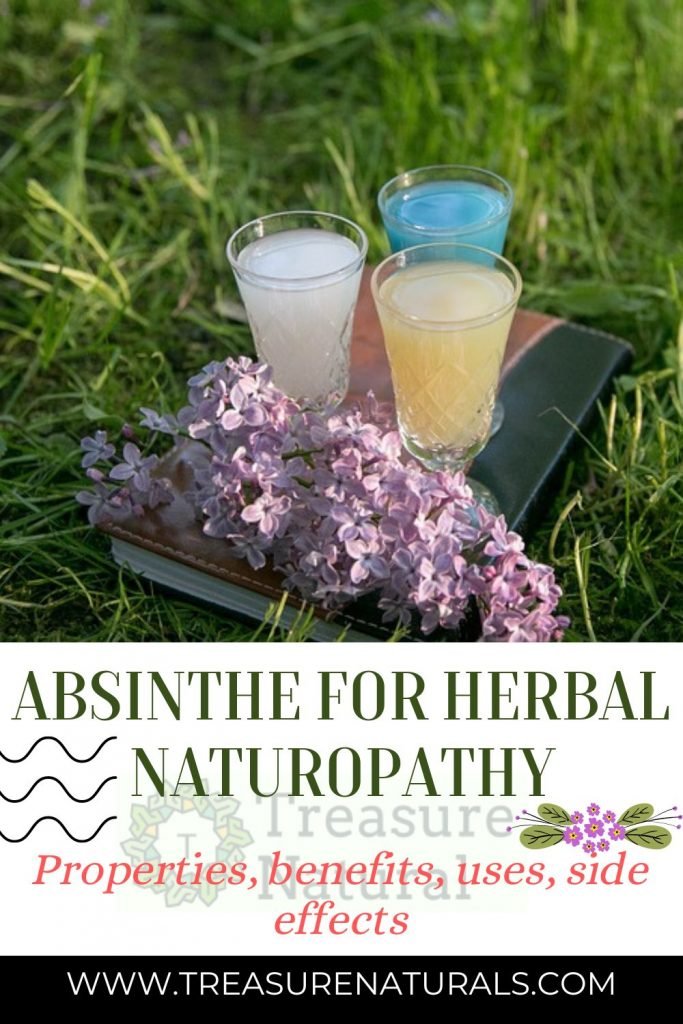
Artemisia absinthium L. (vulg. Absinthe ) is a bitter-tasting plant widely used for various ailments related to the digestive system. In addition to promoting and regulating the menstrual flow, it is also indicated as a febrifuge. Let’s find out better.
Properties of absinthe
The main properties of Absinthe are: choleretic, cholagogue (promotes biliary secretion), eupeptic (facilitates digestion), emmenagogue (promotes and regulates menstrual flow), febrifuge, vermifuge.
The drug is commonly recommended in case of: lack of appetite, biliary hyposecretion, digestive disorders, gastric atony, nervous vomiting, intestinal parasitosis, inflammation of the mucous membranes of the gastro-intestinal tract, amenorrhea, menstrual irregularity, prolonged dysentery. The plant is also used as a hepatoprotector.
Thanks to the presence of numerous active ingredients, which give the phytocomplex eupeptic, choleretic, cholagogue, digestive, vermifuge, emmenagogue properties, Absinthe is widely used in case of lack of appetite in post-convalescence, dyspepsia, inflammation of the gastric mucosa, gastritis, gastric atony , intestinal worms.
How to use
The drug can be used in the form of a fluid extract or as an infusion or decoction.
It would be useful to consume the herbal tea about thirty minutes before meals in case of lack of appetite ; after meals in case of dyspeptic disorders.
From Absinthe a strong liqueur is obtained which gives symptoms comparable to those of soft drugs, an effect due to some specific essential oils present in the plant.
Contraindications and side effects
Being a plant with several toxic active ingredients, it is recommended to use it with extreme caution, and not without consulting a specialist.
At therapeutic dosages, the administration of the drug should not last for a long time, stopping the therapy after about twenty days of taking.
It is contraindicated in case of:
- breastfeeding because it makes the milk bitter;
- gastro-duodenal peptic ulcer;
- gynecological infections.
The main side effects included in the scientific literature are: vomiting, hypotension, diarrhea , decreased heart rhythm, fatigue. However, the non-toxicity of the drug at the recommended doses should be remembered.
Description of the plant
The name absinthe derives from the Greek term apsìnthion (of unknown etymology) and from the Latin absinthium, which can be translated as “plant without delight”, precisely because of the unpleasant (bitter) taste in each of its parts.
The plant, already duly known in ancient Egypt and in Hippocratic Greece, was administered as a tonic and digestive. The euphoric properties of absinthe have also been mentioned in numerous works of different artistic expressions, including Hamlet, a painting by Manet and some of the poems of the so-called “cursed”.
Artemisia absinthium is a perennial, herbaceous plant belonging to the botanical family of Asteraceae. The plant, which grows to a height of one meter, has a characteristic down on the alternate petiolate leaves and on the fibrous stem. The flower heads are yellow and collected in elongated inflorescences. Artemisia ( Artemisia vulgaris ) used against coughs is also known and used in phytotherapy from the same family.
To obtain the drug, the flower tops reduced to powder and the leaves from which liqueurs, bitters and aperitifs are obtained. Among the active ingredients of the phytocomplex we find essentially: absintin (sesquiterpene lactone), flavones, essential oil (which contains thujone and thujol, highly toxic substances that act at the level of the Central Nervous System ), ascorbic acid, tannins.
The habitat of absinthe

The optimal habitat is represented by the characteristic mountain landscapes of Asia, Europe and North America.






